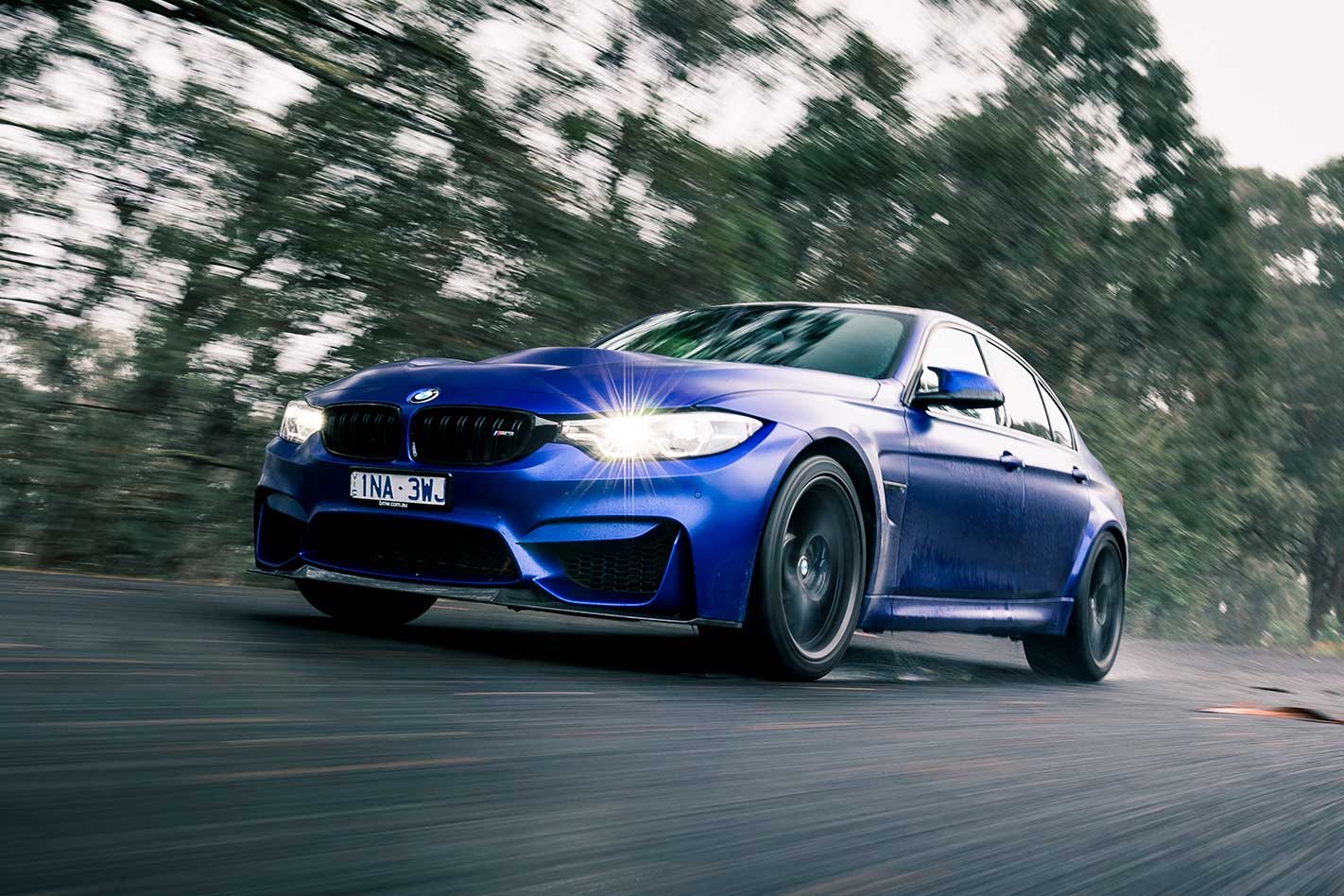Earlier this year, my girlfriend and I bought a puppy. Instantly our lives changed. The little brown, fluffy ball of energy brought plenty of fun and laughter, but he was a lot of work: toilet and obedience training, not to mention the scars from those needle-sharp puppy teeth. These days he’s a lot calmer; he still needs plenty of discipline, but you enjoy the same reward for less effort.
Why do you care about my dog? Well, you probably don’t (though he is very cute), but the BMW F80 M3 has charted a very similar course throughout its life. In its early days it was capable of delivering adrenaline-pumping thrills but could be a right handful on anything other than dry, warm, smooth tarmac.

Over the years BMW has revised suspension, differential and electronic settings in an attempt to calm its overt exuberance without quelling its character. We’ve had the Competition, the Pure, an LCI (Life-Cycle Impulse, or ‘update’ in BMW-speak) and now the CS.
To celebrate the F80 M3, which has ceased production, we’ve brought the ultimate variant to one of Victoria’s finest driving roads, the 15km ascent to the Mount Buller ski resort, a fantastic tarmac rally stage that also serves as a metaphor for the climb the F80 has made over the past five-and-a-bit years. It’ll also provide a good indicator of where the incoming G80 M3 that adorns the cover of the December 2019 issue needs to make the biggest strides.
The weather is miserable, the temperature in the low single digits and incessant rain varies in intensity between irritating drizzle and misery-inducing downpours. Not exactly the ideal conditions for a highly focused rear-driver, but the inclement elements are actually perfect for illustrating the strides the F80 has made in its lifetime.
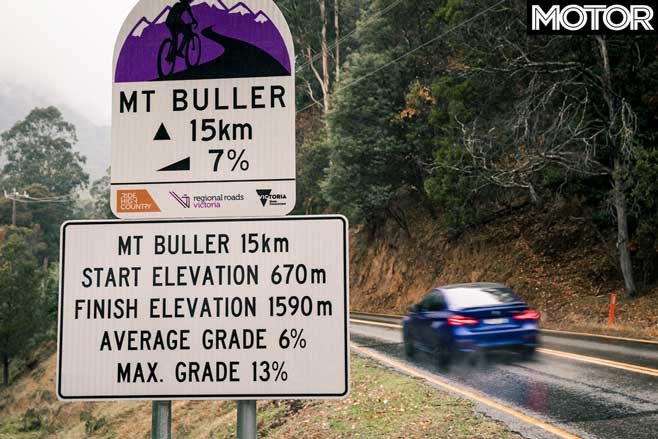
At its launch we were presented with a very different M3, one that sacrificed rpm for huge chunks of torque, thanks to its new 3.0-litre twin-turbo six. Likewise, every measure was taken to remove any hint of slack or imprecision from the chassis: a massive carbon engine-bay brace, myriad other front-end braces, a carbon roof and propshaft, and solid-mounted five-link rear-end. Very impressive, but on a sodden Hampton Downs racetrack and surrounding roads, the combination of the instant response and gobs of torque made for a white-knuckle affair at times, tails twitching like a kid in a sugar coma.
A couple of dry laps hinted at the new car’s potential, but a back-to-back drive with its atmo V8 predecessor proved benign friendliness had been replaced by a more nervous disposition. Back in Oz, further tests cemented those initial findings: in the right circumstances the new M3 was incredible, but on anything other than perfect roads the massive and sudden torque delivery could tie it in knots.
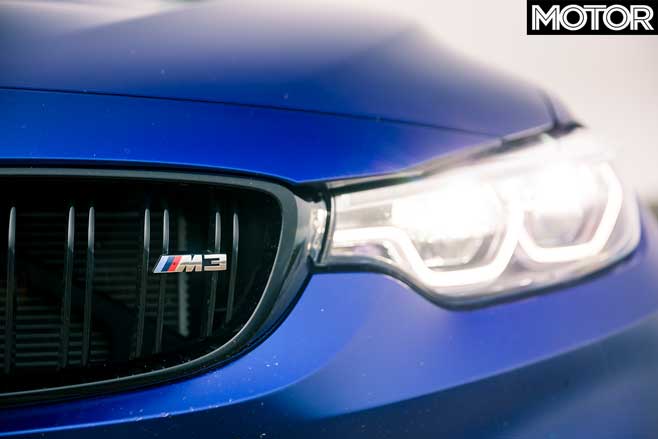
Even then the front and rear felt to respond at different rates, the steering was a bit muddy and it lacked composure over bumps. Evidence of its lack of harmony was the fact you were forever fiddling with the drive modes searching for the sweet spot, only to find it didn’t really exist. On a day like today, faced with a wet, bumpy hillclimb, you’d be happy just to reach the top in one piece.
Enter the M3 Competition. BMW’s boffins extracted an extra 14kW from the engine but spent most of their time fiddling with the chassis. An extra 10mm of tyre width at each end gave it a bigger footprint, 20-inch wheels appeared and, most importantly, there were stiffer springs and dampers, new anti-roll bars and revised calibrations for the stability control and electronically controlled diff.

The changes worked, the M3 Competition’s handling being sharper than ever but with much improved body control, more predictable behaviour at the limit and a raspier exhaust note, especially if you specced the $9350 optional M Performance exhaust. But it still wasn’t quite there.
The stiffer suspension made the ride extremely firm – not helped by the new ‘666’alloys being much heavier than the stock 19s – and the revised ESP was hopelessly conservative, even in MDM mode, forcing its complete deactivation if you wanted even a taste of the M3’s complete arsenal of abilities.
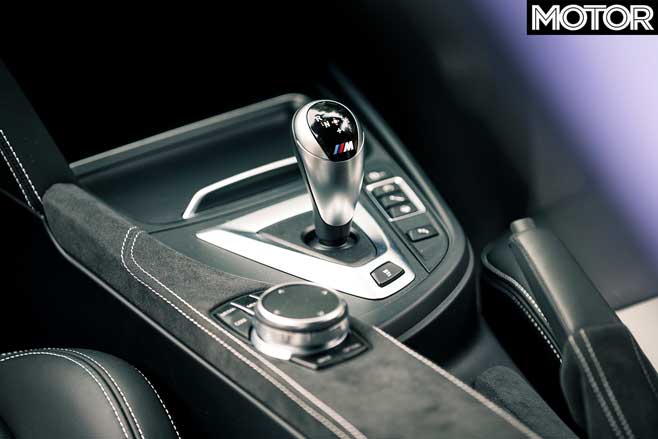
Another round of revisions brought us the M3 Pure. An Australia-only initiative on lighter 19-inch wheels, it stripped the F80 back to basics, deleting a heap of not-really-necessary equipment but keeping the juicy bits of the Competition, namely the extra grunt and revised chassis. Best of all, this package was offered at a stupidly low $129,900 when a regular M3 Competition was $146,710 and a Mercedes-AMG C63 S was $157,211. Bargain.
It was also a sweet drive, the smaller wheels taking the edge off the ride and the ESP once again happy to allow a bit of slip in its sportier setting. Helpfully, I drove an M3 Pure just prior to this feature and, while the combination of a sharp front end and lots o’ grunt required respect, it was friendly and biddable in a way early cars weren’t.

The M3 CS is a different kettle of fish again. An extra 7kW/50Nm brings total outputs to a healthy 338kW/600Nm, which lowers the claimed 0-100km/h time to 3.9sec while top speed is limited to 280km/h. Once again, however, it’s the chassis that has received the most attention. There are further revisions to the spring and damper settings and staggered rims (19s front; 20s rear) wrapped in Michelin Pilot Sport Cup 2 tyres.
A carbon bonnet and lightweight interior shed kilos, though thankfully the M3 CS doesn’t mimic its two-door M4 sibling by eliminating the standard door cards and thus retains some level of practicality. It’s a cool cabin, with swathes of Alcantara and super-supportive seats, though the ultra-fat steering wheel rim is designed for hands much larger than mine and the lightweight ethos is undermined by heated electric seats, which surely weigh more than keyless entry and proper climate control.
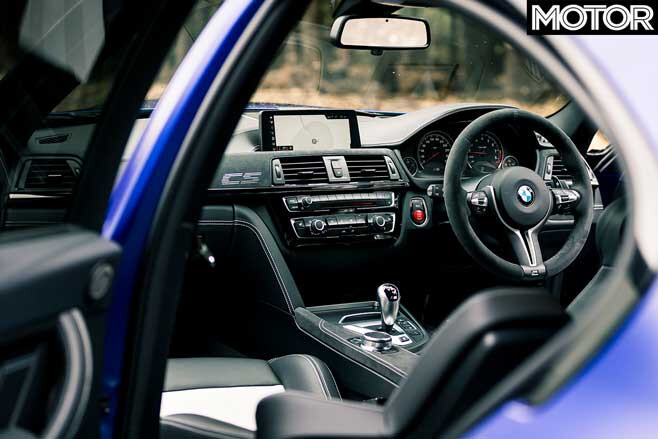
Initially, the CS feels to be channelling those recalcitrant early F80s. On slick, cold roads the track-spec Michelins are utterly disinterested in providing tractive force, working the electronics overtime as the rear-end squirms impotently, or spinning freely with the traction control deactivated. As tyre heat builds, the experience changes completely, the CS displaying a composure hitherto unknown in this generation of M3.
As long as you don’t ask for all 600Nm at once, you can deploy the engine’s full force in second gear, and there’s also the option of fiddling with the settings to give the rear rubber an easier time. Sport-Plus throttle is too aggressive in these conditions, but backing it off to Sport brings greater control; likewise, the angriest gearshift setting breaks traction on upshifts, so again dialling it back to its middle setting makes for a more fluid drive.

It’s still not the most characterful engine. There’s a little more straight-six rasp to the CS, but the limited-run M4 GTS shows the S55 is capable of more aggression. The focus on mid-range torque denies it some of the high-rpm drama of BMW’s best atmo engines, but it’s undeniably effective.
Boost arrives more smoothly than in the early cars, though it’s possible the throttle has just been remapped; at launch the S55 set a new standard for turbocharged response, but there is a small amount of low-rpm lag compared to the latest and greatest. Now and then the drivetrain will get out of sync and you’ll jerk embarrassingly down the road, the car kicking like a pissed-off mule.
The CS chassis changes bring out the best in the M3. Those sticky Cup tyres undoubtedly help, but it’s not the whole story. The M3 Pure driven recently was reasonably friendly, but carry any sort of brake pressure into a corner and you’d have instant oversteer, followed by more oversteer as soon as any throttle was applied. In contrast, the CS’s bum is much more firmly affixed to the road, possibly a result of the staggered wheel set-up, which looks a bit odd, the front arches not filled to anywhere near the same extent as the rears. Great-looking car, though.
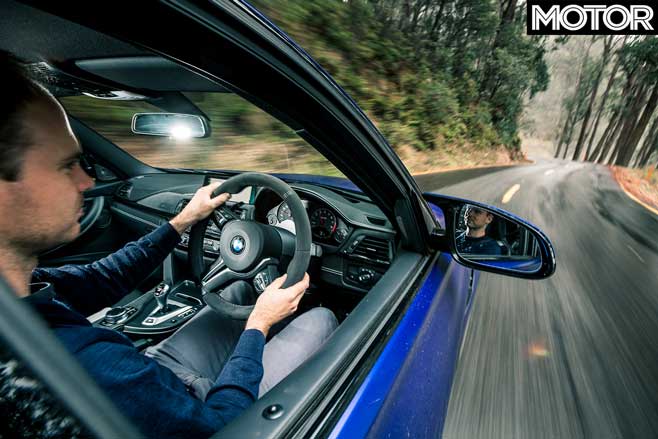
Many of the corners on this Mount Buller road are heavily cambered, but the M3 CS takes such challenges in its stride. Again, the word is composure, which in turn breeds driver confidence, as you have a reasonable idea of what the car is going to do.
Further revisions to the ESP are spot on, allowing the CS to subtly slide around in MDM mode but always keeping a watchful eye on proceedings. It’s not a car that enjoys small slip angles; subsequent time on track proves the M3 CS will happily sit on its lock stops, but with less commitment it fights to retain grip and is difficult to keep balanced.
Nevertheless, instead of tip-toeing across a tightrope, driving an F80 quickly in the wet now feels like dancing over a bridge. One with no sides, perhaps, so care is needed, but you don’t constantly feel on the verge of an accident.
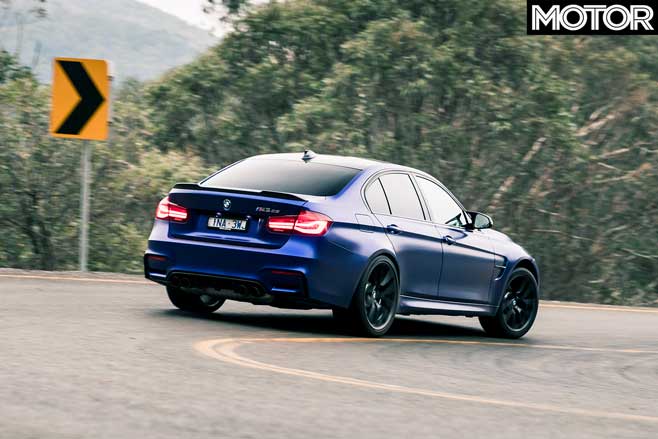
There are still clear areas for improvement we’d like to see in the coming G80. Job number one should be better steering feedback, giving the driver a clearer picture of what’s happening down at the razor-sharp front end. Stronger brakes should also be a priority; the F80 took a step forward, and there’s always the option of carbon-ceramics, but you shouldn’t need to spend an extra $15K to have great brakes. Finally, a little more refinement wouldn’t hurt. The CS ride is firm but fair – there shouldn’t be too many passenger complaints – but the lack of rubber bushings takes its toll on the NVH levels.
The F80 M3 is a textbook example of how a car can improve over its lifetime. Unfortunately, BMW remains tight-lipped on the exact changes it made, refusing to go into detail beyond “revised this” or “recalibrated that”. Nevertheless, kudos for listening to feedback and turning a car that was at times brilliant, at times not, into a machine that can still make a case for being the best in its segment. Hopefully, the G80 will be brilliant out of the box, but if it isn’t, that isn’t necessarily the end of the story.
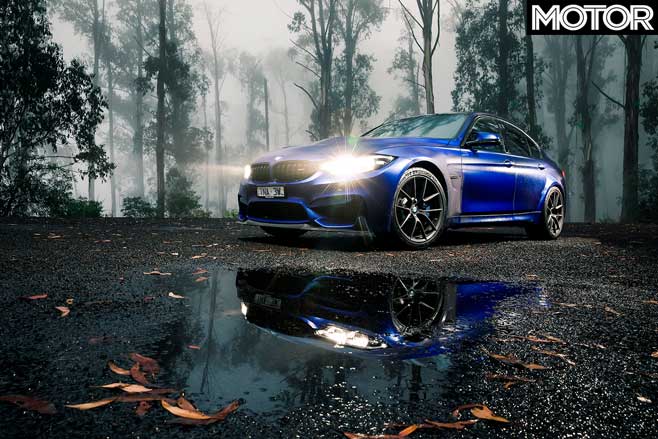
FAST FACTS 2019 BMW M3 CS BODY: 4-door, 5-seat sedan DRIVE: rear-wheel ENGINE: 2979cc inline-6, DOHC, 24v, twin-turbo BORE/STROKE: 89.6 x 84.0mm COMPRESSION: 10.2:1 POWER: 338kW @ 6250rpm TORQUE: 600Nm @ 4000-5380rpm WEIGHT: 1585kg POWER-TO- WEIGHT: 213kW/tonne TRANSMISSION: 7-speed dual-clutch SUSPENSION: struts, adaptive dampers, coil springs, anti-roll bar (f); multi-links, adaptive dampers, coil springs, anti-roll bar (r) L/W/h: 4671/1877/1424mm WHEELBASE: 2812mm TRACKS: 1579/1604mm (f/r) STEERING: electrically assisted rack-and-pinion BRAKES: 380mm ventilated/drilled discs, 4-piston calipers (f); 370mm ventilated/drilled discs, 2-piston calipers (r) WHEELS: 19 x 9.0-inch (f); 20 x 10.0-inch (r) TYRES: Michelin Pilot Sport Cup 2, 265/35 ZR19 (f); 285/30 ZR20 (r) PRICE: $179,900
PROS: Outright performance; looks; handling ability CONS: A little unrefined; confused interior; steering feel RATING: 4.5 out of 5 stars
The Four Iterations of the F80 M3
Standard 2014 – F80 M3 was a quantum shift, introducing turbocharging for the first time. Performance and efficiency hugely improved but noise and poise questionable.

Competition 2016 – Competition variant came with more power, new 20-inch wheels and a hefty series of chassis revisions, but the ride suffered and there was a $10K premium.
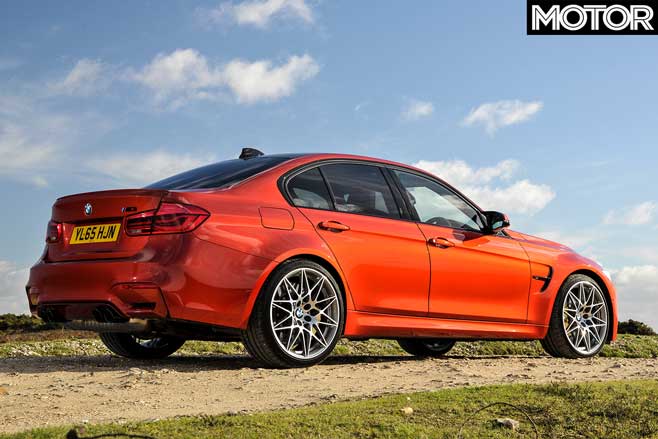
30 Jahre 2016 – A special edition that celebrated 30 years of the M3. A Competition in all but name, 500 were built worldwide – all in Macao Blue, a colour from the E30.
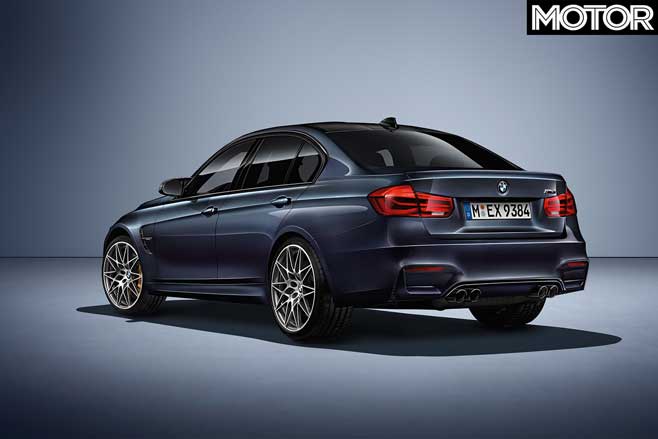
Pure 2017 – Oz-only variant ditched kit like a fancy stereo, leather and adaptive headlights, and offered for a limited time at $119,900 driveaway, the bargain of the century.



